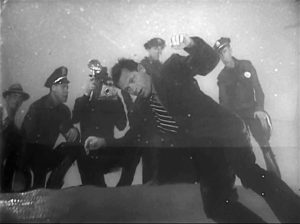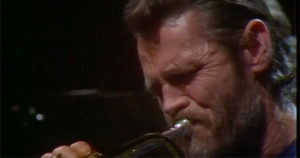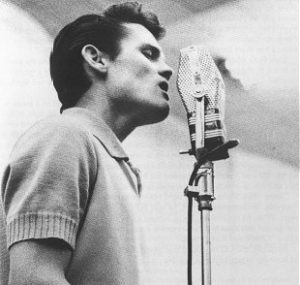Tom Wolfe, who died yesterday, was a card-carrying member of the Grand Old Party of Reality, a journalist whose sole and only loyalty was to the facts painstakingly gathered by hand and scribbled down in his reporter’s notebook. What they told him was what he believed, and the flamboyant manner in which he wrote them up made him rich and famous.
 It was Wolfe’s genius to realize in middle age, however, that his gifts were less specifically for journalism than for a very particular kind of novelistic fiction, the kind animated by first-hand reportage. Out of that realization came The Bonfire of the Vanities, an old-fashioned book written in a newfangled style, one that still sounds electrically fresh three decades after the fact. It is the brash, noisy voice of Wolfe’s Sixties journalism bent to the iron will of a novelist’s imagination—but a novelist who has pledged allegiance to the visible world. The Bonfire of the Vanities is The Way We Live Now, only devoid of the Victorian moralist’s anger, amused instead of outraged by the proliferating follies of New York City in the late Eighties: a Trollope de nos jours, disillusioned and proud of it, determined above all things to tell the truth.
It was Wolfe’s genius to realize in middle age, however, that his gifts were less specifically for journalism than for a very particular kind of novelistic fiction, the kind animated by first-hand reportage. Out of that realization came The Bonfire of the Vanities, an old-fashioned book written in a newfangled style, one that still sounds electrically fresh three decades after the fact. It is the brash, noisy voice of Wolfe’s Sixties journalism bent to the iron will of a novelist’s imagination—but a novelist who has pledged allegiance to the visible world. The Bonfire of the Vanities is The Way We Live Now, only devoid of the Victorian moralist’s anger, amused instead of outraged by the proliferating follies of New York City in the late Eighties: a Trollope de nos jours, disillusioned and proud of it, determined above all things to tell the truth.
And what was that truth? In retrospect, it seems clearer than ever that Bonfire had two things to tell its readers about New York. First, that it was a city of classes, rigidly stratified and riven with envy and fear; second, that it was no less deeply divided by ethnicity. Nothing else mattered. To understand a New Yorker, Wolfe declared, you needed only to plot two points on that pair of intersecting axes, and you could do it without inquiring about his interior life. Was he black or Jewish? Did he wear sneakers or British hand-lasted shoes? That was all you knew and all you needed to know.
 All this goes a long way toward explaining the colossal impact Bonfire had back in 1987. I remember reading it with the same sense of bedazzled revelation that George Orwell’s Winston Smith read The Theory of Oligarchical Collectivism. It was as though the veil of euphemism had been pulled back—no, ripped down—and for the first time I saw New York as it was:
All this goes a long way toward explaining the colossal impact Bonfire had back in 1987. I remember reading it with the same sense of bedazzled revelation that George Orwell’s Winston Smith read The Theory of Oligarchical Collectivism. It was as though the veil of euphemism had been pulled back—no, ripped down—and for the first time I saw New York as it was:
Cattle! Birdbrains! Rosebuds! Goyim! You don’t even know, do you? Do you really think this is your city any longer? Open your eyes! The greatest city of the twentieth century! Do you think money will keep it yours?…You don’t think the future knows how to cross a bridge? And you, you Wasp charity-ballers sitting on your mounds of inherited money up in your co-ops with the twelve-foot ceilings and the two wings, one for you and one for the help, do you really think you’re impregnable? And you German-Jewish financiers who have finally made it into the same buildings, the better to insulate yourselves from the shtetl hordes, do you really think you’re insulated from the Third World?
Were people talking like that in 1987? Sure—but they didn’t publish that kind of talk, which is what made Bonfire so thrilling. As I wrote in The New Criterion on the fifth anniversary of the book’s publication, “Rereading Bonfire, I found myself thinking, over and over again, Nobody would print that today….Without access to a realism of this degree of specificity and honesty, it is impossible for a writer to describe New York, or America, as it really is. Yet who can imagine any New York editor allowing such things to get into print nowadays?”
Be that as it may, Wolfe continued to write and publish blockbuster novels based on the facts scribbled down in his notebook, and to remain an important part of the American cultural conversation to the very end of his long and productive life. After H.L. Mencken, he was America’s greatest journalist, and The Bonfire of the Vanities, fictional though it be, is his greatest work of journalism, a book in which the truth about America in the Eighties is encased as colorfully and vividly as a prehistoric fly trapped in gorgeous yellow amber. It is the way we lived then—and the way we live now.
I confess to being shaken by the news of Wolfe’s death. I last saw him in the flesh a year or so ago, and he looked at once frail and somehow ageless. I couldn’t imagine a world without him then. I still can’t.
* * *
Tom Wolfe is interviewed by William F. Buckley, Jr., on a 1970 episode of Firing Line:



 Mrs. T and I went on Sunday to see a big-screen showing of Billy Wilder’s
Mrs. T and I went on Sunday to see a big-screen showing of Billy Wilder’s  That’s why I made a point of going to a Big Screen Classics showing of “North by Northwest.” This was the first time that I’d seen Alfred Hitchcock’s 1959 masterpiece of suspense in a theater, and I can’t begin to tell you how many subtle details that typically go unnoticed in your living room all but exploded off the large screen on which I watched the film….
That’s why I made a point of going to a Big Screen Classics showing of “North by Northwest.” This was the first time that I’d seen Alfred Hitchcock’s 1959 masterpiece of suspense in a theater, and I can’t begin to tell you how many subtle details that typically go unnoticed in your living room all but exploded off the large screen on which I watched the film….
 Anyone romantic enough to suppose that beauty is ennobling should spend an hour or two leafing through “Deep in a Dream,” James Gavin’s eagerly awaited biography of the jazz trumpeter Chet Baker. From time to time, musicians with a twisted sense of humor have been known to play the macabre game of choosing an all-star band comprised solely of players who are notorious for their compulsively self-destructive behavior; invariably, they pick Baker as solo trumpet. According to Mr. Gavin, he was mad, bad and dangerous to know—yet he played and sang ballads like “My Funny Valentine” and “She Was Too Good to Me” with a fragile tenderness and delicacy that could wring tears from the toughest of cynics.
Anyone romantic enough to suppose that beauty is ennobling should spend an hour or two leafing through “Deep in a Dream,” James Gavin’s eagerly awaited biography of the jazz trumpeter Chet Baker. From time to time, musicians with a twisted sense of humor have been known to play the macabre game of choosing an all-star band comprised solely of players who are notorious for their compulsively self-destructive behavior; invariably, they pick Baker as solo trumpet. According to Mr. Gavin, he was mad, bad and dangerous to know—yet he played and sang ballads like “My Funny Valentine” and “She Was Too Good to Me” with a fragile tenderness and delicacy that could wring tears from the toughest of cynics. A half-educated hick from Oklahoma, Baker was all but incapable of introspection, and rarely had anything insightful to say about his work. Nor is Mr. Gavin a trained musician, meaning that he can shed no analytic light on Baker’s playing. Of necessity, then, “Deep in a Dream” deals primarily with his sordid life. Unlike most musical biographies written by non-musicians, however, this one works—partly because that life was so appallingly eventful, but mostly because Mr. Gavin has done his job with scrupulous care, separating fact from rumor and facing up to the full implications of Baker’s despicable conduct. Unlike Bruce Weber, the fashion photographer turned filmmaker whose 1989 documentary “Let’s Get Lost” treated the handsome trumpeter as a glamorously decadent object of desire, James Gavin has no illusions about Chet Baker. Though he understands the perverse appeal of “the beautiful, self-destructive rebel who lived on the run, avoiding responsibility, rejecting convention,” he treats Baker not as a pretty pin-up boy but as a serious artist worthy of intelligent consideration….
A half-educated hick from Oklahoma, Baker was all but incapable of introspection, and rarely had anything insightful to say about his work. Nor is Mr. Gavin a trained musician, meaning that he can shed no analytic light on Baker’s playing. Of necessity, then, “Deep in a Dream” deals primarily with his sordid life. Unlike most musical biographies written by non-musicians, however, this one works—partly because that life was so appallingly eventful, but mostly because Mr. Gavin has done his job with scrupulous care, separating fact from rumor and facing up to the full implications of Baker’s despicable conduct. Unlike Bruce Weber, the fashion photographer turned filmmaker whose 1989 documentary “Let’s Get Lost” treated the handsome trumpeter as a glamorously decadent object of desire, James Gavin has no illusions about Chet Baker. Though he understands the perverse appeal of “the beautiful, self-destructive rebel who lived on the run, avoiding responsibility, rejecting convention,” he treats Baker not as a pretty pin-up boy but as a serious artist worthy of intelligent consideration….